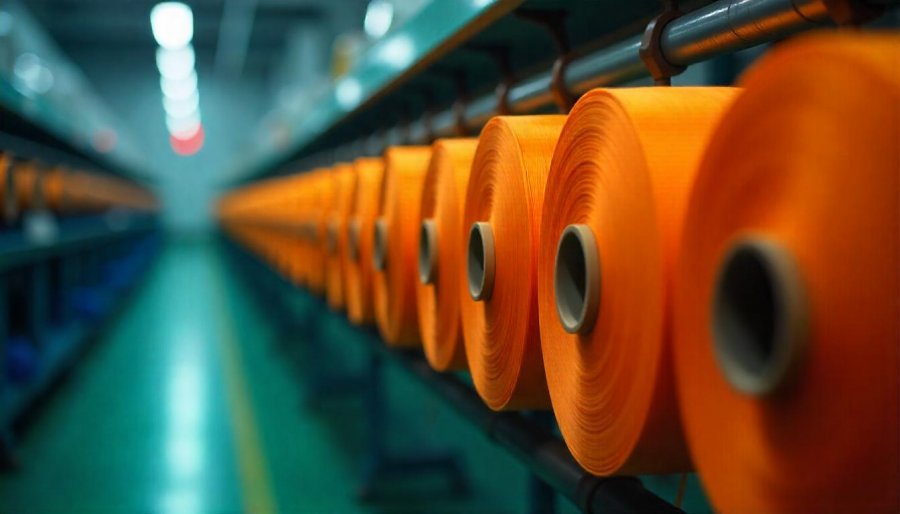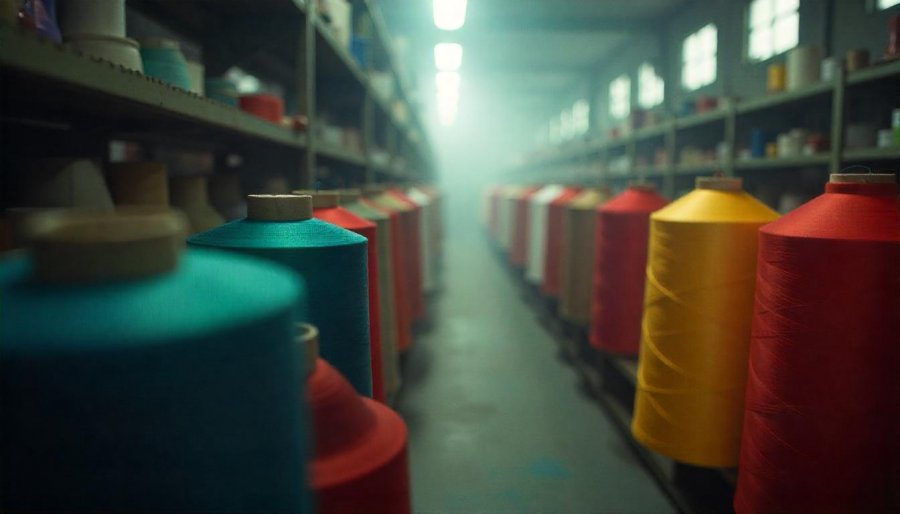Nylon, a fabric woven into our daily lives, is heralded for its durability and versatility, yet beneath its convenience lies a hidden environmental toll rooted in petrochemical processes. Its production, heavily dependent on fossil fuels, releases significant greenhouse gases and pollutants, fueling climate change. Once discarded, nylon’s resistance to decay turns it into microplastics, contaminating oceans, harming marine life, and infiltrating the food chain—raising urgent ecological and health concerns. Its persistent waste lingers for centuries, gradually breaking into tiny fragments that threaten ecosystems across the globe. Despite efforts to recycle and develop bio-based alternatives, the reliance on non-renewable resources sustains nylon’s environmental impact. How many of our everyday products carry such hidden costs, and what will it take to shift toward more sustainable choices? This exploration challenges us to reconsider the true price of convenience in a world increasingly burdened by plastic pollution and ecological degradation.

Nylon’s Ubiquity: A Closer Look at Its Daily Impact
Nylon is one of those materials you probably encounter every day, often without giving it much thought. It’s woven into the fabric of modern life, appearing in the clothes we wear, the carpets under our feet, the sports gear we rely on, and even the packaging that protects our products. Its versatility and affordability have made nylon a staple across countless industries, helping us meet our daily needs with fabrics that are durable, stretchy, and easy to care for. But behind its convenience lies a complex story rooted in industrial processes and petrochemicals, which carry significant environmental implications.
Since its invention in the 1930s, nylon revolutionized the textile industry. Developed by Wallace Carothers and his team at DuPont, it was the first synthetic fiber to hit the market, offering a compelling alternative to natural fibers like cotton, wool, and silk. Its strength, elasticity, and resistance to wear quickly made it popular not just in clothing but also in home furnishings, industrial applications, and even military gear during wartime. Over the decades, nylon’s production expanded rapidly to meet the growing demands of the fast fashion industry, electronics, and packaging, embedding itself deeply into everyday products.
At its core, nylon is a man-made polymer created through a chemical process called polymerization. It belongs to the polyamide family, characterized by long chains linked by amide bonds that give nylon its notable strength and flexibility. Different types, such as nylon 6 and nylon 6,6, are produced from specific monomers derived from petrochemicals—fossil fuels like oil and natural gas. The process begins with extracting these raw materials, refining them into basic chemicals, and then linking them into long polymer chains through high-heat, high-pressure reactions. This process, while efficient for mass production, is energy-intensive and heavily reliant on finite fossil fuel resources.
Once formed, nylon polymers are melted and extruded through tiny nozzles called spinnerets, shaping them into fine filaments. These fibers are then cooled, stretched, and spun into yarns suitable for weaving or knitting into fabrics. Each stage of this process demands significant energy input, making nylon production not only costly but also a notable contributor to greenhouse gas emissions. Its dependence on oil and gas means that every yard of nylon produced is tied to the environmental costs of fossil fuel extraction and refining, adding to the broader issue of petrochemical pollution.
Nylon’s durability is both a blessing and a curse. Its resistance to decay means it can last for hundreds of years once discarded, lingering in landfills and ecosystems long after its initial use. As nylon waste breaks down over time, it fragments into microplastics—tiny particles that contaminate soil and water. These microfibers are released into the environment during washing, passing through water treatment systems and dispersing into oceans and lakes. Marine animals often mistake these fibers for food or become entangled, leading to injury, starvation, or death. This persistence makes nylon a significant player in the global microplastic crisis, with long-lasting impacts on ecosystems and human health.
The environmental footprint of nylon doesn’t end with its durability. Its production and disposal contribute to pollution and climate change, connecting it directly to the finite resources of the petrochemical industry. As demand for nylon grows—especially driven by fast fashion, electronics, and packaging—so do its environmental impacts. Addressing these challenges requires innovation and a shift toward sustainable alternatives, such as bio-based fibers made from renewable resources or recycled nylon derived from waste like fishing nets and plastic bottles. Recognizing the scale of nylon’s environmental toll is the first step toward making more conscious choices about the textiles we use every day.

From Chemistry to Industry: The Origins and Evolution of Nylon
Nylon’s story begins with its unique chemical makeup—long chains of polymers linked through amide bonds, which give the fiber its strength, elasticity, and durability. These chains are formed through a process called polymerization, where small molecules known as monomers are chemically bonded into extensive, tangled networks. The most common types, nylon 6 and nylon 6,6, differ based on the monomers used: nylon 6 is produced from caprolactam, while nylon 6,6 results from reacting hexamethylenediamine with adipic acid. Both monomers are derived from petrochemicals, tying nylon’s origins directly to fossil fuels.
The production journey begins deep within the oil and natural gas industries. Hydrocarbons are extracted through drilling and fracking, then refined into the basic chemicals required for nylon. These refining processes separate and purify the hydrocarbons, creating the monomers needed for polymerization. This step is complex and energy-intensive, involving high heat and pressure conditions that ensure the monomers react properly to form long, strong polymer chains. Over decades, technological advancements have optimized this process for large-scale production, enabling the global supply of nylon to meet rising demand across industries.
Once the polymers are formed, they are melted at high temperatures and forced through tiny nozzles called spinnerets. This extrusion process shapes the molten nylon into fine filaments, which are then cooled, stretched, and spun into yarns suitable for textiles. Each stage requires significant energy input, from refining the raw materials to the final spinning process. Because of this, nylon production contributes heavily to greenhouse gas emissions, making it not only a matter of resource use but also of climate impact. Its reliance on fossil fuels ensures that every yard of nylon is connected to the environmental costs of oil and gas extraction.
Historically, nylon’s rise paralleled the growth of the petrochemical industry, which supplied the raw materials necessary for its synthesis. During World War II, nylon played a crucial role in military applications, such as parachutes, ropes, and tents, which cemented its importance in both defense and industry. After the war, nylon flooded consumer markets, becoming a symbol of modern convenience—used in everything from clothing and carpets to industrial textiles. Its affordability, durability, and versatility made it a staple in everyday life, fundamentally changing how textiles and plastics are made.
However, nylon’s durability is a double-edged sword. Its resistance to natural decomposition means that discarded nylon products can persist for hundreds of years, breaking down into microplastics over time. These microfibers are released during washing and often pass through water treatment systems, contaminating oceans and waterways. Marine life ingests these tiny particles, mistaking them for food, which can cause injury, internal damage, or death. As these microplastics accumulate in the environment, they enter the food chain, posing risks to both ecosystems and human health.
The environmental footprint of nylon extends beyond microplastic pollution. Its production and disposal are major contributors to pollution and climate change, due to the reliance on non-renewable fossil fuels. The extraction, refining, and processing of oil and gas release greenhouse gases and pollutants, intensifying global warming. As demand for nylon increases—driven by fast fashion, electronics, and packaging—so does its environmental impact. Addressing this issue calls for innovation, including the development of bio-based fibers derived from renewable resources like hemp, bamboo, or organic cotton, and expanding recycling efforts to transform waste into new textile materials.
In sum, nylon’s chemical foundation and production process are deeply intertwined with the fossil fuel industry, making it a significant player in petrochemical pollution and environmental degradation. Its durability ensures long-lasting use but also guarantees that waste persists for centuries, continuously contributing to the microplastic crisis. Recognizing the science behind nylon’s composition and manufacturing helps us understand the scale of its environmental impact—and highlights the urgent need for sustainable alternatives and responsible consumption.

The Environmental Toll of Nylon Today: Pollution, Microplastics, and Ecosystem Risks
Nylon’s environmental footprint today is increasingly difficult to ignore, especially given the profound effects of its production and disposal. Manufacturing nylon remains heavily dependent on fossil fuels, with each yard of fabric contributing to greenhouse gas emissions that accelerate climate change. The energy-intensive processes involved—from extracting raw materials to refining and polymerizing them—release significant amounts of carbon dioxide and other pollutants into the atmosphere. Despite advances in technology, the core reliance on oil and gas keeps nylon’s production firmly tied to the environmental costs of fossil fuel extraction, making it a notable contributor to petrochemical pollution.
Once in use, nylon fabrics shed tiny fibers known as microfibers during washing. These microfibers are so small that water treatment plants often fail to capture them entirely, allowing them to escape into oceans, lakes, and rivers. Marine life mistakes these fibers for food or becomes entangled in them, leading to injury, starvation, or death. The accumulation of microplastics in aquatic ecosystems disrupts food webs and threatens biodiversity. Because nylon does not biodegrade, these fragments persist for centuries, fragmenting into ever-smaller particles that disperse across ecosystems, affecting countless species and habitats.
Discarded nylon products, including clothing, packaging, and industrial waste, often end up in landfills where they remain for hundreds of years. Their resistance to natural decomposition means they slowly break down into microplastics, which then leach into soil and water over time. These tiny particles contaminate environments, ingested by wildlife or absorbed by plants, and can carry harmful chemicals added during manufacturing. Landfills filled with nylon waste act as long-term reservoirs of pollution, steadily releasing microfibers and chemical residues that degrade ecosystems and threaten human health.
The ocean vividly illustrates the scale of nylon’s environmental impact. Microplastics from nylon fibers are carried by currents over vast distances, infiltrating marine habitats and affecting a broad range of organisms. Fish, seabirds, and marine mammals ingest these particles, often mistaking them for food, which can cause internal injuries, blockages, and even death. As microplastics accumulate in the marine food web, they pose risks to species and ecosystems alike. Human communities that rely on seafood are not immune; microplastics have entered the food chain, raising concerns about potential health impacts from consuming contaminated seafood.
The reliance on fossil fuels for nylon’s production links its environmental damage directly to the finite resources of the petrochemical industry. Extracting and refining oil and natural gas releases greenhouse gases and pollutants, fueling climate change and environmental degradation. As global demand for nylon rises—driven by fast fashion, electronics, and packaging—the environmental costs multiply. This dependency underscores the urgent need for alternative materials and manufacturing methods that reduce or eliminate reliance on non-renewable resources, fostering a more sustainable approach to textile production.
Efforts to mitigate nylon’s environmental impact are gaining momentum, but challenges remain. Recycling initiatives, such as transforming waste fishing nets, plastic bottles, and industrial scraps into regenerated nylon, help reduce landfill waste and microfiber shedding. Researchers are also exploring bio-based fibers derived from renewable resources like hemp, bamboo, or organic cotton, which mimic nylon’s desirable properties without depending on fossil fuels. These innovations aim to create a circular economy for textiles, where materials are reused and recycled, minimizing environmental harm.
Despite these promising developments, widespread adoption of sustainable alternatives is still evolving. Industry standards, consumer awareness, and supportive policies are crucial to accelerate change. Reducing nylon’s environmental footprint requires a collective effort—embracing sustainable fashion, supporting recycling technologies, and demanding transparency from manufacturers. Only through coordinated action can we hope to lessen nylon’s long-lasting impact on ecosystems and human health, steering toward a future where convenience no longer comes at the planet’s expense.
Understanding the current environmental toll of nylon reveals the urgent need for change. Its production and persistent waste contribute substantially to pollution, microplastic contamination, and climate change. Recognizing these impacts helps inform smarter choices—favoring sustainable materials, supporting recycling efforts, and advocating for industry innovation. Moving forward, a deeper awareness of nylon’s hidden costs can inspire us to rethink our consumption habits and push for a more responsible, eco-friendly approach to the textiles and plastics we rely on daily.